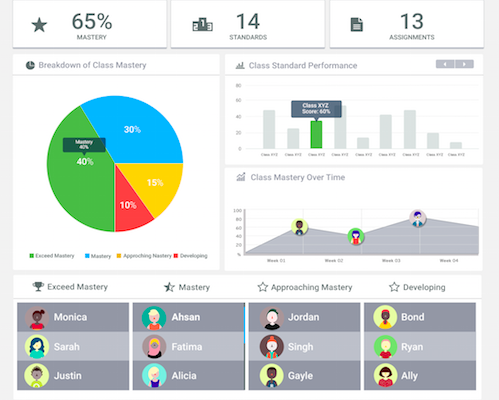The Top 5 Startling Truths about Gifted and Talented Programs

Some people view the idea of placing students gifted and talented programs as inherently unfair. After all, who determines what is considered “gifted” in the first place? Some studies have even found that gifted programs favor white students and that Black and Latino students are constantly overlooked. These claims are generally backed up with statistics that show an overwhelming proportion of white students in talented programs and under representation from other demographics.
Although it’s great that students with exceptional talent in some areas are able to explore their abilities in greater depth, there’s an ugly side to the existence of Gifted and Talented programs. Here are a few facts and statistics that illustrate how:
- There might be discrimination against minorities in Gifted and Talented programs.
What happened when the New York Times visited Public School 163? This is what it looked like: a bunch of white kids on the “gifted” side of the school, and mainly children of color on the general or special education side. Under one-third of the talented and gifted students are black or Hispanic combined, but only 18 percent of the regular student population is white. Teachers interviewed for the story admit that it looks bad but do not seem to have a way to solve the problem. They also admit that the requirements to enter the program are parent-centric which tends to favor white families in that district. Outright admittance of discrimination is missing from the teacher reasoning, as expected, but the numbers seem to imply it.
- There is discrimination against minorities in Gifted and Talented programs.
Some districts simply have obvious discriminatory practices in place. Take Illinois School District U-46, for example. In this particular district, over 40 percent of the student population is Latino, but only 2 percent of the gifted program is from this demographic. In July, a federal district court judge found that the school system had discriminated against its gifted Latino students by placing them in a program separate from white peers. The judge also ruled that the policies in place to identify gifted students had a “disparate impact” on the Latino school population. The lawsuit was spearheaded by the Mexican American Legal Defense and Educational Fund.
- Being bilingual might become the new excuse to exclude students from the Gifted and Talented Program.
It is taboo to demonstrate the belief that a particular race or ethnicity is inferior but there is often an audience for those who believe English is the superior language.
In the case of the Illinois schools the Latino students who were placed in separate gifted programs had English as a second language, or were bilingual at least. The language barrier appears to be the excuse used by district leaders for separating Latino students from their white counterparts. Is knowledge of the English language a prerequisite for academic success though? As the world becomes less segmented, particularly when it comes to communication, is it fair to separate our student populations based on their native language?
I wonder how much discrimination is masked by the language excuse. It seems as though it is okay to discriminate against fellow citizens if a core American value – like a unified language – is the reasoning. This Illinois case is indicative of what might be found in any school district in an area where Latino students are prevalent and it represents a subtle acceptance of racism if it goes against mainstream behavior.
- The process of getting into a TAG program may be discriminatory against low-income and minority students.
Many TAG programs start around second or third grade. Though these students are old enough to read and write, the intricacies of an application for a TAG program are certainly the responsibility of parents. For working class parents, time is of a premium and even a one-page talented and gifted program application may rank low on a family priority list. To other parents that lack a college education, or even a high school diploma, the application process may seem foreign, uncomfortable and even cryptic. I use this example of the application process to highlight a larger point: the lack of minority students in talented and gifted programs oftentimes reflects poor communication between the parent and the school district. Better guidance for parents regarding the application process and program expectations can lead to more diversity in student representation in TAG initiatives. Parental comprehension is not a given thing; guidance through these programs for the benefit of the students is the responsibility of program administrators.
- Talented and Gifted programs may need to devise ways to become inclusive.
District schools need to find ways to better recognize different types of learning talent and look beyond the typical “gifted” student model. The CEC-TAG Diversity Award is a good example of thinking outside the box on minority inclusion in gifted programming. Established in 2010, the recognition goes to schools that look for innovative ways to include under-represented groups (read: blacks, Hispanics and Native Americans) in advanced K-12 programs. In addition, winning schools must be Title I certified. This national push to make talented and gifted programs better mirror the contemporary and ever-evolving student body as a whole is a step in the right direction. Real change happens on a smaller scale though, in individual districts, schools and TAG programs. That progress must start with understanding of the makeup of a particular student body and include innovative ways to include all students in TAG learning initiatives.
Do you think that Talented and Gifted programs are inclusive enough as they are? How can these programs improve?






